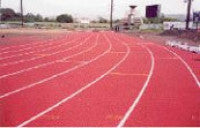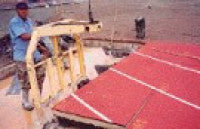The versatility of a modular turf system
The versatility of a modular turf system
By Editor
In 1994 the world got its first glimpse of the possibilities of modular turf systems when Michigan's Pontiac Silverdome hosted a portion of the games during the soccer World Cup. Because World Cup matches must be played on natural grass, and the Silverdome had artificial turf, Michigan State Professor Trey Rogers and the staff of the Robert W. Hancock Turf Research Station were asked to solve the problem.
The team's result was a series of octagonal trays filled with natural grass that could be moved into the stadium for each game and then later removed.

One of the latest constructions has been installed at The Estadio Francisco Montaner in Ponce, Puerto Rico. City officials wanted to maintain their playing surface with natural grass for the Lions baseball team, but still be able to host, on synthetic track, the collegiate track-and-field competition and, on occasion, the Pan-American Games for Central America and the Caribbean.
GreenTech shipped about 2,000 of its ITM trays to Puerto Rico. Once on site, half of the modules were filled with the traditional mix for turfgrass, while the others were filled with concrete, topped with the special synthetic surface for track-and-field competition.
The concept was truly 'outside the box,'" said John Patton, vice president of GreenTech, which manufactures 4-square-foot, high-density, polyethylene containers that have primarily been used for athletic fields, golf course tees, and rooftop gardens.
For athletic fields, the GreenTech modules are filled with a layer of gravel and 7 to 11 inches of rootzone mix then turfed or seeded.
"Foot locator pads" lock the modules together and keep them closely aligned to insure no seams or joints disrupt the playing surface. Channels accommodate forklift or pallet jack arms on all four sides; and numerous small holes enable extensive drainage and gas exchange into the rootzone.
"You have to fight traditional thinking, but the science is behind this method," said Patton. "Dr. Rogers at Michigan State is an adviser for GreenTech as well as Dr. Rich Hurley at Rutgers University and Dr. Dave Chalmers of Texas A&M."
For further details please contact Simon Jacob on 01268 799 592 or e-mail: greentech.uk@btopenworld.com.
